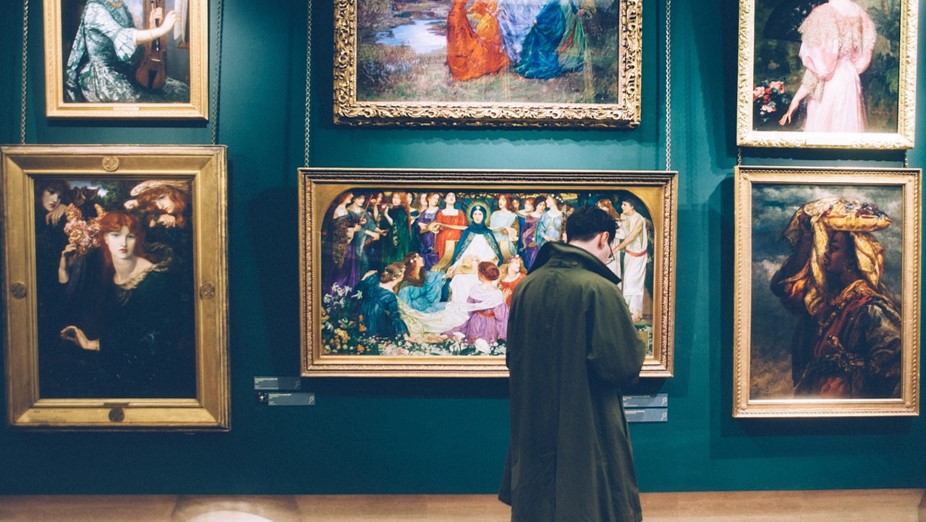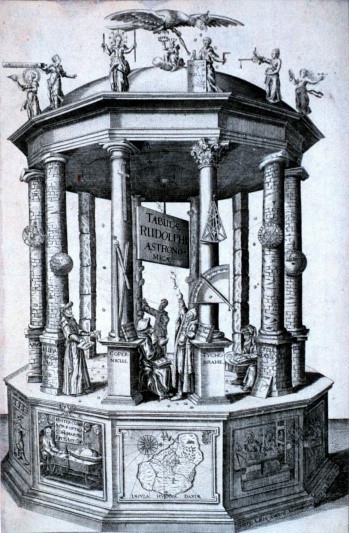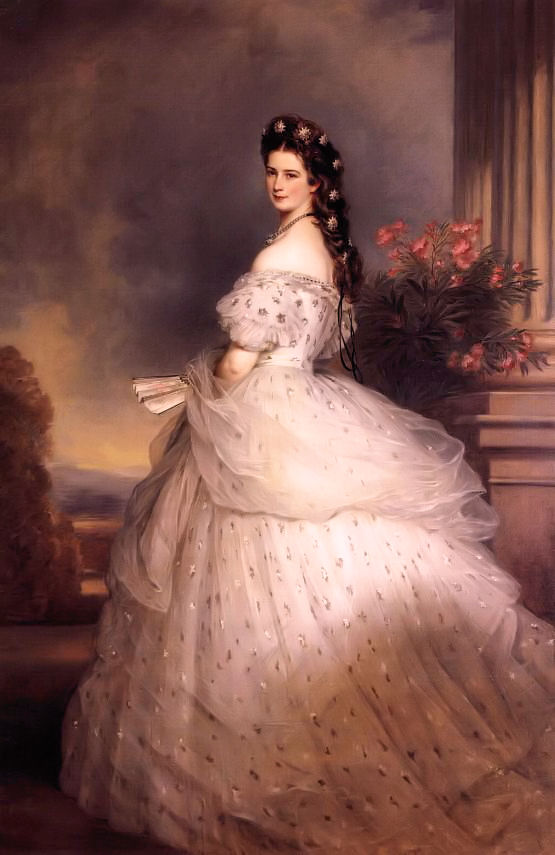Explore the inside of the Habsburg family through Masterpieces

In my previous blog, (Rise of the Habsburg Empire), I tried to get a general picture of the “Habsburgs,” who reigned from their base in Vienna, Austria, until the 20th century. In this blog, I would like to unravel the history of the Habsburgs from the viewpoint of “masterpieces”.
(Painting: Rudolf II of Habsburg as Vertumnus, by Giuseppe Arcimboldo, 1591)

(Reference: Wikipedia)
You might have seen this painting before. It is painted by Giuseppe Arcimboldo, a leading Mannerist painter from Milan, Italy. Reflecting the “Age of Discovery” in 1492, the royalty and aristocracy of the time competed to “collect things which are new and strange from the New World, and create wunderkammer (rooms of wonder) [Nakano 08, p.113]”. None had a collection comparable in size and diversity to that of Holy Roman Emperor Rudolf II, the model for this painting. This suggests that he was a considerable collector. He collected not only works of art, but also “exotic plants and animals, insect specimens, jewelry, ancient relics, foreign banknotes, automata, animal entrails, living deformed humans (which is clearly shown in the painting ‘Las Meninas’), or their skeletal specimens [Nakano 08, p. 113]”. This was the beginning of the natural history boom.
Before the advent of photography, one of the important tasks of court painters at this time was to record in pictorial form the rare plants and animals collected by the royalty and nobility. For this reason, this painting is a kind of “pictorial book” of rare vegetables, fruits, and plants. Although he painted not only portraits but also ordinary pictorial books, his reputation was not as high as it might have been at the time. There are records that Rudolf II called him as a court painter, with Bruegel in charge of botanical paintings and Rouland Surferry, well known for his paintings of live dodo birds, in charge of animals. Furthermore, Artimboldo, rode the wave of the natural history boom of the time, and his portraits incorporating “pictorial book” elements were an unprecedented hit. (He was also court painter to Maximilian II, the father of Rudolf II. He was also interested in natural science to the extent that he built a botanical garden and a zoo around Vienna, and in early 1569, he dedicated two series of works, “The Four Seasons” and “The Four Elements,” as an annual gift to Maximilian II).
By the way, one of the most famous figures of this period was the astronomer Johannes Kepler, who proved that the planets had elliptical orbits. Astrology was also a regular university subject. (Some of you who listen to the daily audio reports of our Institute’s membership service “Takeo Harada’s Gemeinschaft” may have heard this before!) the Holy Roman Emperor Rudolf II supported this astronomer (astrologer), Kepler. The astronomical tables created by order of Rudolf II to mathematically estimate the positions of the planets are known as “Rudolf’s Tables”. (The Rudolph Tables were more accurate than any other astronomical tables that had preceded them and became an indispensable tool for astronomers, astrologers, sailors, surveyors, and sundial mechanics over the centuries.)
(Painting: Door to “Rudolph Table” – Astronomers in the past are depicted.)

(Reference: Wikipedia)
The second painting is “Las Meninas (The Courtesans),” painted by Diego Rodríguez de Silva y Velázquez, a Spanish painter of the Baroque period who was a master representing the golden age of Spanish painting in the 17th century.
(Painting: Las Meninas, by Velázquez, 1656)

(Reference: Wikipedia)
While portraits of nobles are basically painted alone, the first thing you may notice when looking at this painting is that it may depict a daily snapshot. It is said that this painting was influenced by the Dutch painters of the time, who painted groups of royalty.
Now, how many people are in this painting? As if guided by the light coming through the window on the right, many of you looked at the princess: one, two, three, …nine people? There are actually also her parents in the painting. Please look at the mirror placed behind the princess. You can find two more persons.
If you notice that the painter Velázquez himself is standing in front of the large canvas on the left, you can see that he is not painting Princess Margarita in the center, who was around 5 years old when this painting was made, but her parents, King Felipe IV of Spain and Mariana (This painting is in the collection of the Prado Museum in Spain, and Velázquez was the artist entrusted with the appraisal and collection of King Felipe IV’s art, so many of the works in the collection of the Prado Museum were selected by Velázquez.)
This was painted in Velázquez’s studio in the Royal Palace (Alcázar) in Madrid. This large, high-ceilinged room was originally the room of Prince Baltasar Carlos, who was born in Madrid as the first son of King Felipe IV of Spain and his first wife, Isabel de Borbón. Velázquez later rose to the position of de facto vizier, managing the entire court, indicating that the royal family had great confidence in him.
In terms of composition, although there are 11 characters in the painting, all of them are depicted in the lower half of the painting, which expresses the size of the room. The reason why the top and bottom halves are not separated is due to the huge canvas on the left and the pillars on the right. If we take into account that Felipe IV and Queen Mariana are standing in front of the painting, we can see that there is a zigzag line leading from the front to the back through about seven layers. In addition, while focusing on Princess Margarita to draw attention to this, the focus of the other characters has been changed as a perspective technique, which gives the painting a more realistic depth (the touch of the two in the mirror is very rough). The actual size of the painting is 3.18 meters, which means that Princess Margarita is almost the actual size when you stand in front of it. It would be interesting to see the painting and feel the atmosphere of the painting at the Prado Museum.
The last painting is by Franz Winterhalter, a German painter based in Paris, famous for his portraits of aristocrats throughout Europe. Let me explain a little bit about the painter Winterhalter first. He was a pupil of Josef Carl Stiehler, who is very famous for having painted Beethoven’s portrait. Similar to his master, he excelled at moderately adapted paintings (as popular today in processing applications), and was sought after by the royalty and aristocracy of his day. He is said to have painted portraits of most of the royal families in Germany, Austria, France, England, Italy, Belgium, Russia, Portugal, etc., all of which were painted by Winterhalter.
(Painting: Empress Elisabeth by Winterhalter, 1865)

(Reference: Wikipedia)
The woman depicted here is Elisabeth, the second daughter of Duke Maximilian of Bavaria (28 years old). This work is paired with a portrait of her husband, Franz Joseph I. (Franz Joseph, then 23 years old, was arranged to marry his cousin, Princess Helene of Bavaria, but Joseph was so taken by the 15-year-old Elisabeth (nicknamed Sisi), who was his escort at the arranged marriage, that he ended up marrying Elisabeth.)
Although Winterhalter is most famous for his single portraits, such as this one, his group portraits “Queen Victoria and Family (1846)” and “Empress Eugénie surrounded by her attendants (1855)” are also very famous. 1855 was the year of the Paris Exposition, and the world was moving toward a more modern age. The painting is also impressive because it depicts the 18th century Rococo style, while the world was moving toward modernity.
As mentioned above, Winterhalter also painted a portrait of Franz Joseph I, who served as Habsburg and Austrian emperor for 68 years. Since the Habsburg dynasty collapsed two years after Joseph I’s death in 1916, the reign of Joseph I and Empress Elisabeth is considered to be the last glorious period of the Habsburg Empire, and it was during this time that the “last court painter” This painting by Winterhalter, the “last court painter,” is a masterpiece.
The Empress Elisabeth depicted in this painting was a very active woman who enjoyed horseback riding (women rode sideways in those days), fencing, riding a suspension ring, and playing with a steel array. She was also a fashion leader who maintained a perfect figure throughout her life, standing 172 cm tall, weighing 43-47 kg, and having a 51 cm waist, while giving birth to three children at the same time. In her time, cameras were advanced, and indeed, she was photographed a lot (because she was so focused on “beauty”, she began to avoid photography as she get older).
What awaited Elisabeth was a scandal surrounding her son, Rudolf. Rudolf was being raised by Joseph I’s (Elisabeth’s husband’s) mother, Sophie, as the next emperor, so Elisabeth herself, as the birth mother, was rarely involved as a mother. As a result, it is said that “Rudolph was starved of love, felt rejected by his mother, and came to be at violent political odds with his father for a long time [Nakano 08, p.183].” He also suffered from a complex of physical infirmity, and although he was forced to marry a Belgian princess, the relationship was unsuccessful, and at the age of 31, he committed suicide with a 17-year-old baroness (the Meyerlinck tragedy). Elisabeth, who had rushed there from her travels, must have felt responsible and continued to wear mourning clothes until her death.
Her last moment was in Geneva, Switzerland, on September 10, 1898, nearly 10 years after Rudolf’s death. 61-year-old Elisabeth was walking the streets with her maid. Reporter took their picture and used it in the newspaper. The world knew they were in Geneva, and as they walked along the shores of Lake Geneva, an Italian anarchist man with a weapon attacked them. The blade of the weapon was fatal to her. The Italian man, Luigi Lucheni had originally planned to assassinate Italian royalty, but had just been stranded in Geneva after being denied entry into Italy. Lucheni then targeted the next royal nobleman to enter Geneva, the Duke of Orleans of France, but was unable to carry out his plan because he left Switzerland a step ahead. Then came the newspaper news that Elisabeth was in Geneva. After looking back on her dramatic life, how does Winterhalter’s work “Empress Elisabeth” look to your eyes?
I hope you enjoyed these three works of art. I remember when I was a student in the Netherlands, I took a course called “Dutch Painting,” so looking at the paintings and thinking about their backgrounds reminded me of the time when I studied hard for the exams with my classmates. Art exhibitions are held regularly in Japan, so there may be opportunities to visit and see those works of art. However, even if you visit an art exhibition, you would not delve into the background of each painting unless you have a great passion for it. In this blog, we have taken up three paintings in particular, and have once again unraveled the aristocrats from the perspective of the “Habsburgs.” I would be glad if I could provide some interesting insights into the thoughts and characteristics of the people of the time, not only from the written word, but from the world of paintings.
Chancellery Unit, Group for Project Pax Japonica, Maria Tanaka
※The statements in this blog are not the official views of the Institute, but rather the personal views of the author.
[References]
・[Iwasaki17]Syuichi Iwasaki, Habsburg Empire, Kodansha Ltd. Gendai-Shinsho, Inc., 2017.
・[Nakano08]Kyoko Nakano, The 12 Stories of the Habsburgs as Deciphered by Famous Paintings, Kobunsha-Shinsyo, 2008.



